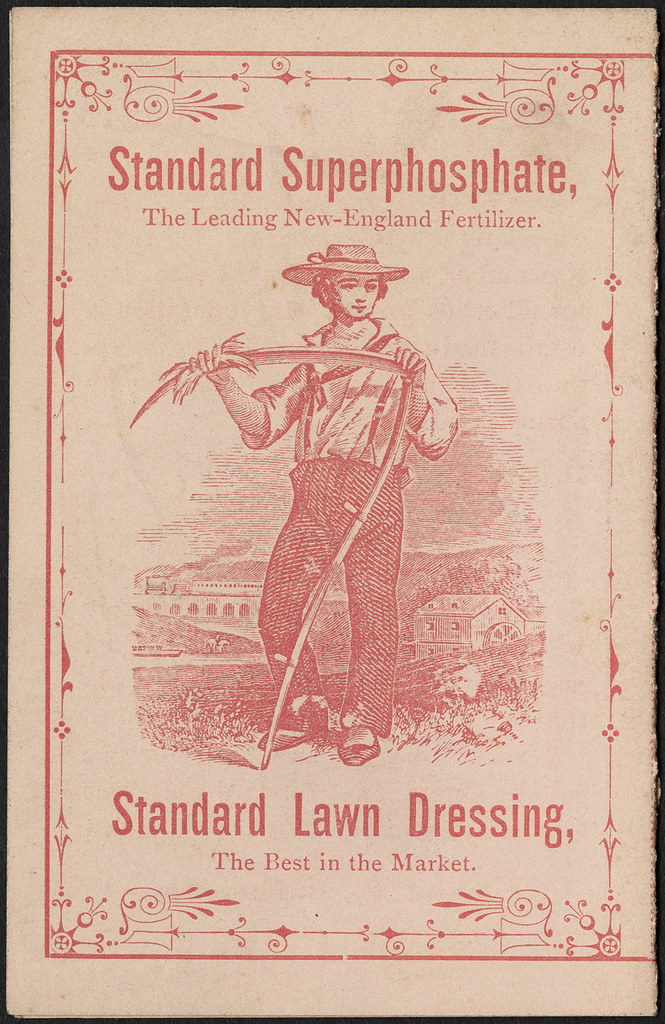
Fertiliser programmes
Mixing hydroponic fertiliser yourself ?
The commercially available fertilisers consist of a complete fertiliser supplemented with macronutrients. They are offered by some hydroponics and/or fertiliser companies and vary depending on the hydroponic plant. An example of a fertiliser programme is the hydroponic tomato programme offered by Hydro-Gardens.
In this programme, growers purchase Hydro-Gardens Chem-Gro tomato formula. It has a composition of 4-18-38 and also contains magnesium and micronutrients. To make a nutrient solution, it is supplemented with calcium nitrate and magnesium sulphate, depending on the variety and/or growth stage of the plant.
Boston Public Library is licensed under CC BY 2.0
Advantages of fertiliser programmes
Very little or no mathematical calculations are required to prepare nutrient solutions.
Disadvantages of fertiliser programmes
Another disadvantage is that fertiliser programmes do not allow farmers to take into account the nutrients already present in the water source. For example, if a water source has a potassium content of 30 ppm, there is no way to adjust the amount of potassium added in the fertiliser programme. And too much potassium can in turn block the uptake of other nutrients.
Fertilizer programs can be more expensive than using
Recipes for the production of nutrient solutions.
Mix recipes for nutrient solutions / hydroponics fertilizer yourself
Modified Sonneveld recipe / herbs
| element | concentration |
| Nitrogen | 150 ppm |
| Phosphorus | 31 ppm |
| Potassium | 210 ppm |
| Calcium | 90 ppm |
| Magnesium | 24 ppm |
| Iron | 1 ppm |
| Manganese | 0.25 ppm |
| Zinc | 0.13 ppm |
| copper | 0.023 ppm |
| Molybdenum | 0.024 ppm |
| Boron | 0.16 ppm |
It is at the discretion of the breeder which fertilizers he uses to produce a nutrient solution according to a recipe. The fertilizers commonly used include:
| fertilizer | Dosage, contained nutrients |
|---|---|
| Calcium nitrate | 15.5 – 0 – 0.19% calcium |
| Ammonium nitrate | 34 – 0 – 0 |
| Potassium nitrate | 13 – 0 – 44 |
| Sequestrene 330TM | 10% iron |
| Potassium phosphate monobasic | 0 – 52 – 34 |
| Magnesium sulfate | 9.1% magnesium |
| Borax (laundry quality) | 11% boron |
| Sodium molybdate | 39% molybdenum |
| Zinc sulfate | 35.5% zinc |
| Copper sulfate | 25% copper |
| Magnesium sulfate | 31% manganese |
Advantages of nutrient solution recipes
Nutritional solutions allow fertilizers to be adjusted based on the nutrients contained in water sources. An example: A gardener uses a water source with 30 ppm potassium and produces the modified Sonneveld solution for herbs that requires 210 ppm potassium. It would have to add 180 ppm potassium ( 210 ppm - 30 ppm = 180 ppm ) to the water in order to obtain the amount of potassium required in this recipe.
With recipes, nutrients can be easily adjusted. When a leaf analysis report indicates that a plant has iron deficiency. It is easy to add more iron to the nutrient solution.
Since recipes make it easy to adapt, fertilizers can be used more efficiently than in fertilizer programs. Using recipes can be less expensive than using fertilizer programs.
Disadvantages of nutrient solution recipes
It has to be calculated how much fertilizer has to be added to the nutrient solution. (Link to performing calculations). Some people may feel intimidated by the calculations involved. However, the calculations only require uncomplicated mathematical skills based on multiplication and division.
A high-precision scale is also required for the measurement of micronutrients, since the required quantities are very small. Such a scale can be found on Amazon from 30.- €: e.g .: KUBEI 100g / 0.001g.
This is about the calculation of nutrient solutions for your own needs
Kontext:
ID: 415


